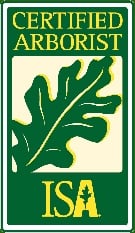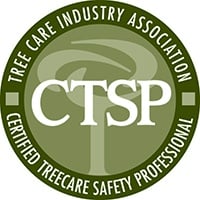Updated September 20, 2021
You picked out the perfect tree from your local garden center in Concord, NC. You may have broken a sweat, but you're finally done digging and ready to settle your tree down into the hole. The tree was pretty deeply planted in the garden center's container — should you plant just as deeply? Definitely not.
Planting a tree too deep and covering up its root flare can lead to a whole host of problems. But don't worry — if your tree's root flare is covered by dirt or mulch, there are ways to fix the issue.
What is the root flare, anyway?
The root flare is the bottom part of the tree where the roots merge into the trunk. On some trees it's a distinctive curve, while on others it's a gentle slope. The root flare is also sometimes called the root collar or trunk flare.
Besides improper planting or mulching, grade changes during construction projects may have covered up your tree's root flare. Or maybe your tree has just naturally settled into its hole over time. Regardless, it's important to resolve the issue as soon as possible.
.png?width=548&name=Root%20Flare%20(1).png)
A covered up root flare is bad for your tree
Roots are made to resist constant moisture. The root flare, on the other hand, is not. You should always be able to see your tree's root flare.
When the root flare is buried by too much soil and/or mulch, moisture can get trapped against the bark and eventually waterlog it. Since the root flare is technically part of a tree's trunk, it needs to be able to move oxygen and carbon dioxide in and out of its inner bark, or phloem. When the root flare is buried, those important gas exchanges can't happen.
Eventually, phloem cells will start to die and the movement of food from the leaves to the roots will be disrupted.
If your tree's root flare is buried, the eventual problems you might notice include:
- Foliage yellowing
- Early leaf coloration and drop
- Upper crown dieback
Excess dirt and/or mulch covering the root flare can also lead to decay, which includes the breakdown of the bark's protective barrier. With that barrier gone, insects and/or pathogens can infest your tree more easily.
A buried root flare can lead to stem girdling roots (SGR), too. Stem girdling roots grow around the trunk at or below the soil line. These roots can severely compress the outer trunk tissue and cut off the flow of sap from the leaves to the roots.
Leave the diagnosis to the professionals
It's best to let a professional evaluate your tree and make a proper diagnosis for any tree issue. A buried root flare can lead to many secondary issues, so you may not even realize the buried root flare is the source of your tree's issues. A plant health care specialist can tell you for sure.
If you've noticed signs of stress in your tree and you know the root flare is buried, you can use a shovel to expose it, if it's not buried too deeply.
But be careful. The bark in the root flare area is delicate, and you may hurt your tree while trying to remove some of the soil or mulch around it.
If the root flare is buried too deep for your shovel to handle, we can help. Carolina Tree Care, serving Concord, NC and the surrounding area, offers air excavation using specialized equipment to safely expose the root flare.
Is your tree's root flare buried? Our pro would be happy to take a look. Request a consultation today!
Quick tree planting tips
Keep these planting tips in mind to make sure you don't cover up your tree's root flare!
- If the root flare is already exposed, match the top of the soil in the container or root ball with the existing grade. You can even place the tree up to 2 inches higher than the surrounding soil, if needed.
- There's no need to loosen the soil at the bottom of the hole you dug. That could cause the root ball to settle and the tree to sink deeper than it should be.
- If your new tree is balled up and covered in burlap, cut away the upper third of the wire basket and burlap wrapping. If the burlap is synthetic or treated, remove it completely before you put your new tree in the ground.
And remember: When spreading mulch around mature trees, leave 3-6 inches of space between the mulch and the trunk.







